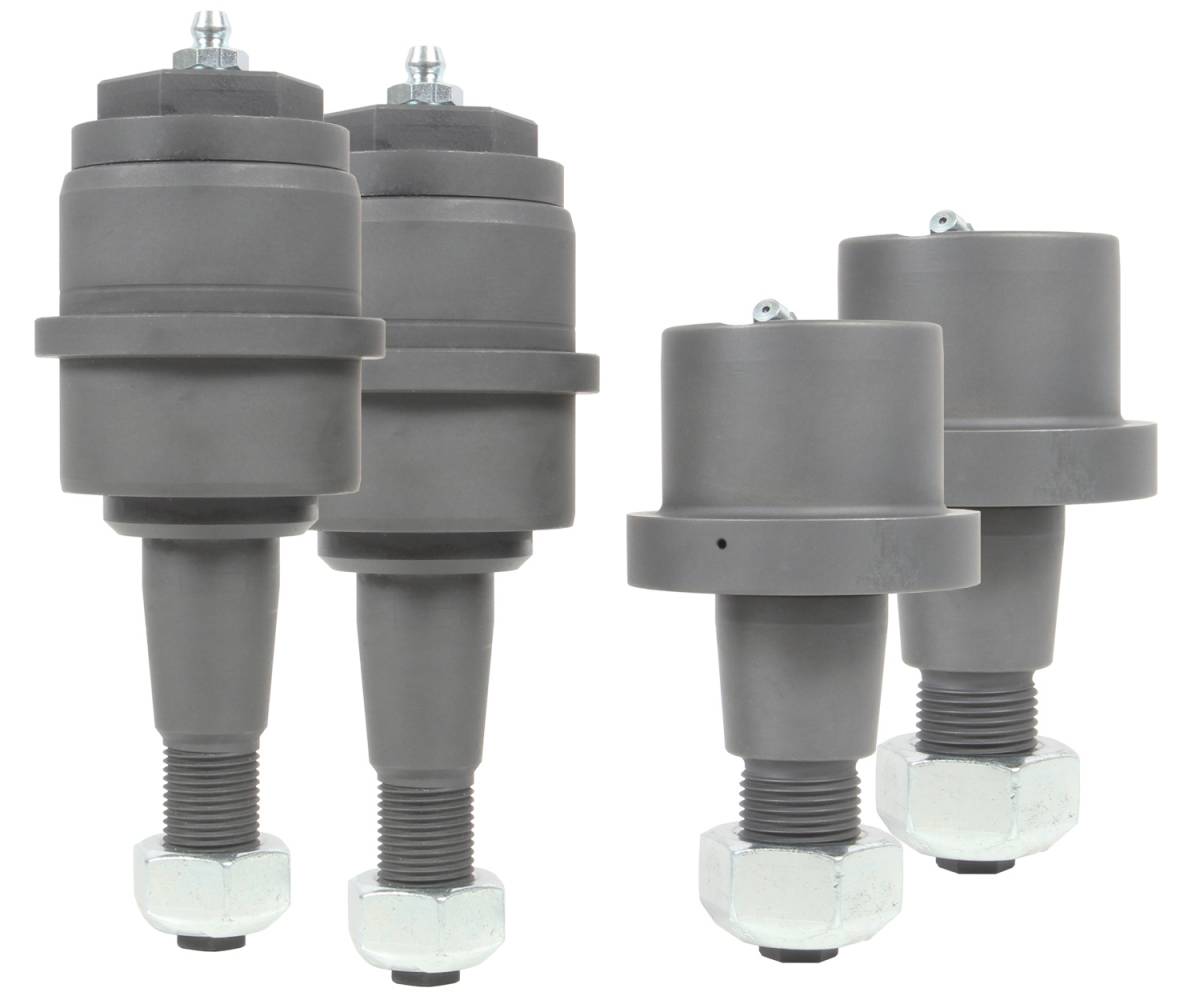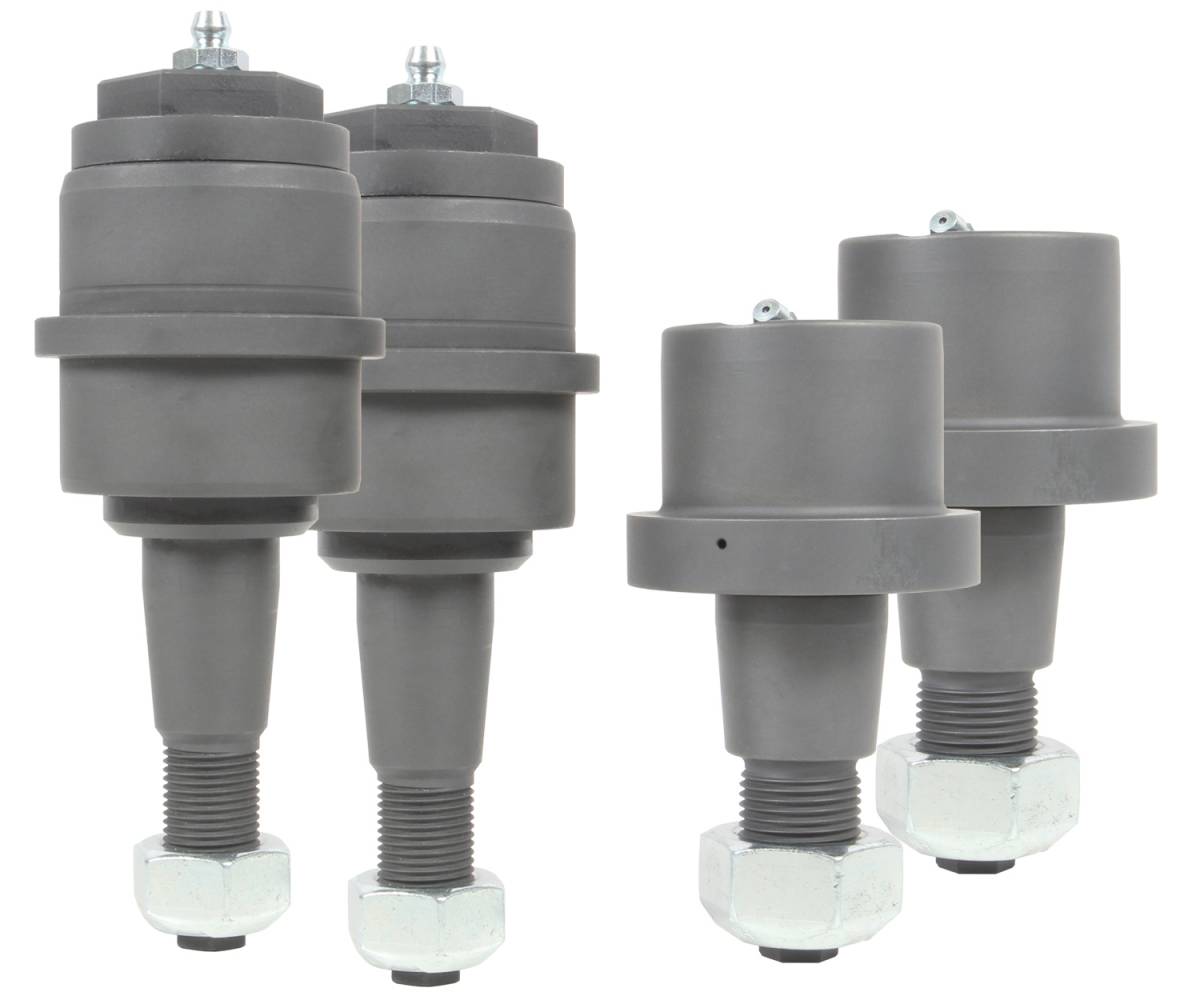Product Description:
SKU: CS-DBJP-14
- Set of Upper and Lower Ball Joints
- LIFETIME Advanced-Replacement Warranty
- Copper Plated, Carburized and Dry-Lubed
- Includes a tube of Redline CV2 Grease
- Fitment: 2013+ Ram 3500 4x4
- Fitment: 2014+ Ram 2500 4x4
If you own a Ram HD and you’ve spent any time researching front end parts, it’s likely you’ve heard of Carli Ball Joints. Well, now those in possession of a post-2013 suspension redesigned Ram HD equipped with factory radius arms have the ability to install their last set of ball joints. Now that the research has begun and our customers are overloaded with information, what’s the benefit to these Carli Joints?
The main differentiators that matter – materials, process, and design. Our philosophy has always been to skip on the enumeration of materials and process. Leave this to the engineers way smarter than those of us within the organization who are put to the task of trying to destroy the products they design. As our lifetime ball joints have been in circulation for many years and more competition enters the market, the “what makes these so special” questions surfaces regularly; we’re happy to shed some light!
The design comes first. To know how we improved it, let’s take a look at the factory. The Factory Ball Joints are made up of a lower ball joint and upper floating king-pin. What better way to learn a product than to cut it in half to learn it’s functionality. The upper ball joint is designed as a pivot point determining the axis on which the knuckle will move and thus, only sees a lateral load. When you cut into the factory ball Joint, you find a sealed housing, sleeve, pin and boot. The upper cavity stores the grease from the factory and allows the “hat” of the pin to float up and down as the knuckle raises and lowers through the steering cycle. The “hat” of the pin does not make contact with the housing, it only prevents the pin from pulling out the bottom of the housing. As the hat of the pin doesn’t contact, there’s a coated sleeve that isolates the pin from the housing and it’s vertical surface is the only wear surface for the upper.
The Carli Joints are similar in design in that we utilize the same style of a floating King-Pin upper but with several improvements in design. You’ll notice our ball joint has a pin and housing but the “hat” of the pin contacts the housing. This adds a second wear surface to further distribute the load applied laterally to the ball joint while providing the same failsafe as a factory ball joint ensuring the pin cannot be pulled through the bottom of the ball joint housing. Further, there is no sleeve isolating the wear surfaces eliminating the point of failure. The upper cavity’s size is increased to hold a larger grease reserve and the threaded cap both allows access to the cavity and pin if needed and allows servicing through its zerk fitting. You’ll also notice the channel in the pin itself providing a path for grease to migrate to the wear surface. At the bottom of the housing, a Viton Seal prevents the environment from entering the ball joint.
Upper Ball Joint Comparison
The lower ball joints are the true ball joints in the AAM design. The spherical lower is a ball and socket design allowing lateral misalignment (unlike the king-pin upper). Because the design tracks the knuckle on an imperfect axis, the spherical lower is required to allow the knuckle to move freely with only a slight vertical travel through its steering cycle. By design, the lower factory joint is a pin isolated from the housing by a nylon material loaded from the top and sealed by a press with a boot to keep out the elements. When this composite liner fails, the ball joint needs to be replaced. It’s the old saying, a chain is only as strong as its weakest link.
Lower Ball Joint Comparison
Our improvement on this design begins with the ability to service the joint. The Zerk fitting is recessed into the top of the joint and protrudes at an angle to be aimed forward and slightly inward to allow access to the fitting without needing to disassemble anything. In the cutaway, you can see the channels machined into our ball surface conducive to grease migration. Again, you’ll see no liners of any kind. At the top, a bronze wear surface preloaded by a disc spring, safety washer and snap ring ensures the ball joints wear surfaces are always held tightly together for optimal performance. Not shown in the picture but including in our lower is a rubber seal locking the housing to the pin.

